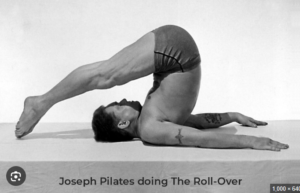Activation energy – is this the magic key to unlock consistently successful habit forming?
Habits are complex. They are hard to make stick, despite our genuine good intentions towards them. It is curious to me that I have successfully formed habits in some areas of my life, but failed to apply the same methodology and logic that had been successful with those habits, to others which I can’t seem to be able to make stick.
I have a cold water habit, a flossing habit, a running habit; yet consistent attempts at a meditation habit have eluded me. Why, if I apply the same habit forming methods, can I not be sure of habit forming success? Is the inconsistency a personal character flaw, or is the way we seek to form habits flawed, and if so, what might be the missing link to increase our success rates at habit forming?
There are a wealth of tools and techniques and expert voices on the topic. I’m sure you’re familiar with the work of James Clear Atomic Habits, Charles Duhigg Power of Habit, BJ Fogg’s Tiny Habits. Yet even if you’ve read the books, and understand the Habit Loop framework around which they are modelled, statistically you are likely to continue to fail at least once at maintaining a habit successfully to the point of automaticity.

I may have the missing link for you. : )
Activation energy.
Activation energy is a term used in chemistry to describe the minimum amount of energy required to activate a chemical process. The greater the chemical reaction you are seeking, the greater the activation energy required. Psychologist Mihaly Csikszentmihali adapted the concept and used it to apply to engaging in positive behaviour. Shaun Achor, in his book The Happiness Advantage, turned activation energy into a twenty second rule for making habits easier to do. For him it was about placing his guitar on a guitar stand within easy reach, removing the 20 seconds it would take to get it from the wardrobe where it previously was.
In a nutshell, you reduce or eliminate the amount of activation energy required to adopt a new habitual behaviour, for example a morning run. To create a morning run habit, you eliminate all unnecessary steps between your waking self and the run, so you prepare your running clothes, shoes, and hair tie ready the night before and leave them beside your bed so you don’t have to expend activation energy looking for them, thereby running the risk of engaging your thinking brain and talking yourself out of starting.
The aim is to remove as many mental and physical obstacles to starting as you can, thereby creating the path of least resistance to starting your desired behaviour. The beauty of activation theory when applied to habits is that it does just that. It is incredibly effective in reducing the mental and physical obstacles to progress at each stage of your habit forming, making it easier for the habits and behaviours to attain automaticity, at which point they have been successfully incorporated into your daily routine.
Working from home and Habits
Working from home has huge potential for improving how we work and how we live; however it can also be incredibly challenging in that it removes the tangible boundaries between work and home. In this blurry space, it can be hard to instil good habits into our day. I think activation energy can be your friend here.
If you are working from home, and want to drink more water throughout your day, try putting a fresh jug of water (with a spring of mint in it if you want to be fancy to yourself) and a clean glass in the room you are working from before you begin work. If you want to introduce more physical activity breaks into your working day, try creating a walking route around your home and garden that begins right at your desk. In both instances you are removing the activation energy required to engage in the habit, thereby removing the mental and physical obstacles that so often hamper our best efforts at habit forming and behavioural change.
When I was recovering from surgery recently, I removed as many obstacles as I could to the behaviours I wanted to engage in to help me get better. I began what I called ‘MoJo’ or motivational journaling, and I made sure that my journal and pen were always on the windowsill beside my chair. I needed to begin walking again, and so my initial walking route that I designed for myself was literally from the chair I was sitting in. Removing the activation energy to begin made it easy and sustainable for me to stick to the habits I had identified that would bring me back to the health and activity levels I was at pre- surgery.
Try applying activation energy to your habit forming / behavioural change, and let me know how you get on. I also believe that for long term automaticity of habits, they need to be aligned to our core values. I’ll write about this in another post.



